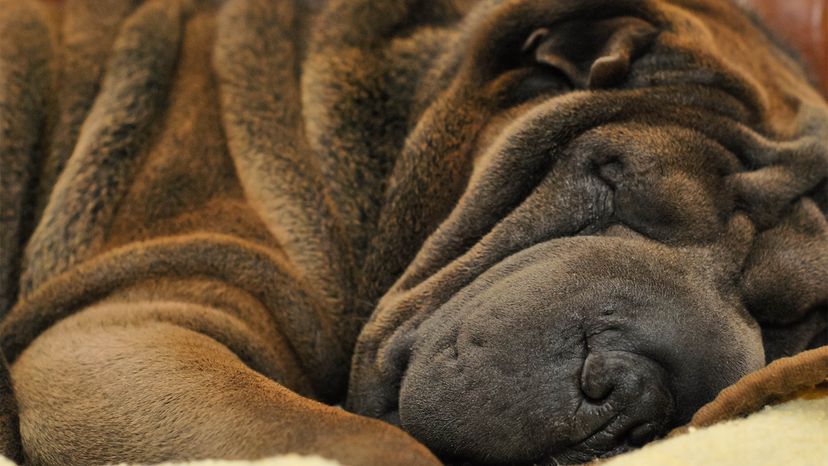
Looking for a dog that will turn heads or stop passersby in their tracks? Check out the Shar-Pei. With their unique loose and "wrinkled" skin and hippopotamus-shaped muzzle, Shar-Pei are a unique member of the canine family.
The breed originated in China — the name Shar-Pei literally translates to "sand skin." And this stocky pooch — a full-grown Shar-Pei stands about 2 feet (0.6 meters) high and weighs between 45 and 60 pounds (20 to 27 kilograms) — lives up to its name.
Advertisement
The Shar-Pei coat is short and coarse, falling in heavy folds around the dog's head, neck and shoulders. They are typically fawn-colored, but the American Kennel Club (AKC) lists up to 17 different colors. In addition to their prominent muzzle, Shar-Pei have small, deep-set eyes and tiny ears. Their tongues are blue-black.
But it's the wrinkles that make Shar-Pei so memorable. In an email interview, Dr. Kerstin Lindblad-Toh of Uppsala University in Sweden writes that a Shar-Pei's wrinkles are caused by the hyaluronic acid synthase 2 (HAS2) gene. "HAS2 encodes an enzyme synthesizing hyaluronan, a major component of the skin," she says. "The hyaluronan is up-regulated and accumulates in the thickened skin of Shar-Pei."
In hyper-layman's terms, hyaluronan is a sort of "gel" around the cells in the skin. Among other things, it aids in hydration and elasticity of the skin. In a Shar-Pei, the HAS2 gene goes into overdrive creating way too much hyaluronan and that causes the trademark wrinkles, which are especially visible in Shar-Pei puppies. By the time a Shar-Pei is full grown, its wrinkles have settled down and are typically just in the face, head and neck.
Advertisement



